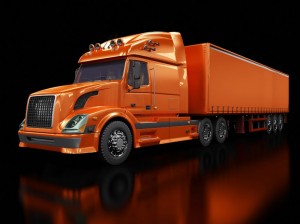-
18
Feb
Quality Driveaway is Threatened by Regulatory Changes
 As the trucking industry continues to grow, the growth of the dimensions of the trailers used to move millions of tons of cargo each year is eating in to the profits.
As the trucking industry continues to grow, the growth of the dimensions of the trailers used to move millions of tons of cargo each year is eating in to the profits.The legal size limits of tractor-trailers have evolved over the years. Trailers once had a limit of 42 feet and a width of 96 inches. Now, it’s 53 feet long and 102 inches wide. Yet trucking companies are still having a rough time keeping up with the amount of products that need to be moved. Small trucking companies and independent truckers have the hardest time making the switch to larger equipment and providing quality driveaway. Some studies say that the industry has gone from around 80 percent small company and independent truckers to around 20 percent. The change in regulations will continue to widen the disparity.
Tractor-trailers cost between $160,000 and $260,000 and will last around one million miles. But drivers want to make every one of those miles count, and with larger dimensions and bigger loads, fuel usage goes up and profit margins fall.
Like many ailments facing the nation, the government can take a portion of the blame for what’s happening with the trucking industry. Emissions standards have forced engine manufacturers to build less efficient engines that are also less reliable. With fewer manufacturers in the market, there is less competition and no real interest in pricing to please. This is all handed down to the truck owner who is doing his/her best to provide quality driveaway. There are also more costs related to tires. Due to changes in the commercial truck tire standard, a low resistance tire is what drivers are forced to roll with. These tires have shallower treads, which means they wear out faster. They’re also not as useful on snowpack as the deep treaded tires are, which means there is more chance of accidents or delays. It’s not unusual for a trucker to spend more than $1,000 per tire replacement (if the rim is replaced as well).
Another trend that may or may not be hurting the industry is the fairing kits being installed on trucks today. They are designed to make the rig more aerodynamic. Unfortunately, they’re also designed cheaply and tend to break, which makes the fuel savings a wash. New tractors that are made to be fuel-efficient are also eating up those fuel savings with maintenance costs that are required to keep them running in top form.
The need for quality driveaway is continuing to grow. But the changes in the industry are forcing a narrower scope of choices in who delivers that service.